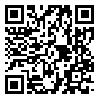Volume 78, Issue 12 (March 2021)
Tehran Univ Med J 2021, 78(12): 790-795 |
Back to browse issues page
Download citation:
BibTeX | RIS | EndNote | Medlars | ProCite | Reference Manager | RefWorks
Send citation to:



BibTeX | RIS | EndNote | Medlars | ProCite | Reference Manager | RefWorks
Send citation to:
Saljoughi F, Estabraghnia Babaki H, Hassaniazad M, Sohrabipour S. A novel corona virus 2019 (COVID-19) outbreak: review article. Tehran Univ Med J 2021; 78 (12) :790-795
URL: http://tumj.tums.ac.ir/article-1-11063-en.html
URL: http://tumj.tums.ac.ir/article-1-11063-en.html
1- Student Research Committee, Faculty of Medicine, Hormozgan University of Medical Sciences, Bandar Abbas, Iran.
2- Department of Internal Medicine, Shahid Mohammadi Hospital, Faculty of Medicine, Hormozgan University of Medical Sciences, Bandar Abbas, Iran.
3- Infectious and Tropical Diseases Research Center, Hormozgan Health Institute, Hormozgan University of Medical Sciences, Bandar Abbas, Iran.
4- Endocrinology and Metabolism Research Center, Hormozgan University of Medical Sciences, Bandar Abbas, Iran.
2- Department of Internal Medicine, Shahid Mohammadi Hospital, Faculty of Medicine, Hormozgan University of Medical Sciences, Bandar Abbas, Iran.
3- Infectious and Tropical Diseases Research Center, Hormozgan Health Institute, Hormozgan University of Medical Sciences, Bandar Abbas, Iran.
4- Endocrinology and Metabolism Research Center, Hormozgan University of Medical Sciences, Bandar Abbas, Iran.
Abstract: (3121 Views)
In 2019 a newly emerged coronavirus was detected by the Center for disease control (CDC) in China. Nucleic acid sequencing from nose and throat swab samples of patients revealed that it was like severe acute respiratory syndrome coronavirus (SARS-CoV). World Health Organization (WHO) named it coronavirus disease 2019 (COVID-19) and reported more than 100000 positive tests until March 2020 for COVID-19. During the past 20 years, the world has been affected by three coronavirus epidemics, SARS-COV, Middle East respiratory syndrome coronavirus (MERS-CoV), and COVID-19 that make world attention. The mortality rate of COVID-19 was more than other coronaviruses, but because of more people affected by it, it seems that it has a less fatality rate compared with MERS- CoV. Initial data showed that more than 80% of patients did not have any symptoms or may had light symptoms. 15% showed severe pneumonia, 5% became critically ill, and developed multiorgan dysfunction and septic shock. Due to the epidemic of emerging viruses and the lack of information about it, this study aimed to provide a quick overview of the most recent studies in the world. To perform this review, keywords such as COVID-19, severe acute respiratory syndrome coronavirus 2, and Angiotensin-converting enzyme 2 were retrieved using the medical subject headings (MeSH) system and then searched in English in PubMed, Scopus, Google Scholar, and Web of Science databases.
COVID-19 virus enters its genome into the cells by binding to Angiotensin-converting enzyme 2 in some organs such as the lungs. Although the transmission route is unclear, it enters the body through respiratory droplets. The clinical symptoms includ fever, cough, dyspnea, myalgia, confusion, headache, sore throat, rhinorrhea, chest pain, diarrhea, nausea, vomiting, malaise, and convulsion. The standard diagnostic method is Real-time polymerase chain reaction (RT-PCR), but due to the time-consuming and sensitivity and the existing errors in this technique, chest CT and hematologic data are preferred. No definitive cure for the virus has been suggested so far, but antiviral drugs such as Oseltamivir, Ganciclovir, Lopinavir, Ritonavir and Remdesivir, and the anti-malarial drug Chloroquine phosphate and Interferon are in use until the discovery of the vaccine.
COVID-19 virus enters its genome into the cells by binding to Angiotensin-converting enzyme 2 in some organs such as the lungs. Although the transmission route is unclear, it enters the body through respiratory droplets. The clinical symptoms includ fever, cough, dyspnea, myalgia, confusion, headache, sore throat, rhinorrhea, chest pain, diarrhea, nausea, vomiting, malaise, and convulsion. The standard diagnostic method is Real-time polymerase chain reaction (RT-PCR), but due to the time-consuming and sensitivity and the existing errors in this technique, chest CT and hematologic data are preferred. No definitive cure for the virus has been suggested so far, but antiviral drugs such as Oseltamivir, Ganciclovir, Lopinavir, Ritonavir and Remdesivir, and the anti-malarial drug Chloroquine phosphate and Interferon are in use until the discovery of the vaccine.
Type of Study: Review Article |
| Rights and permissions | |
 |
This work is licensed under a Creative Commons Attribution-NonCommercial 4.0 International License. |





